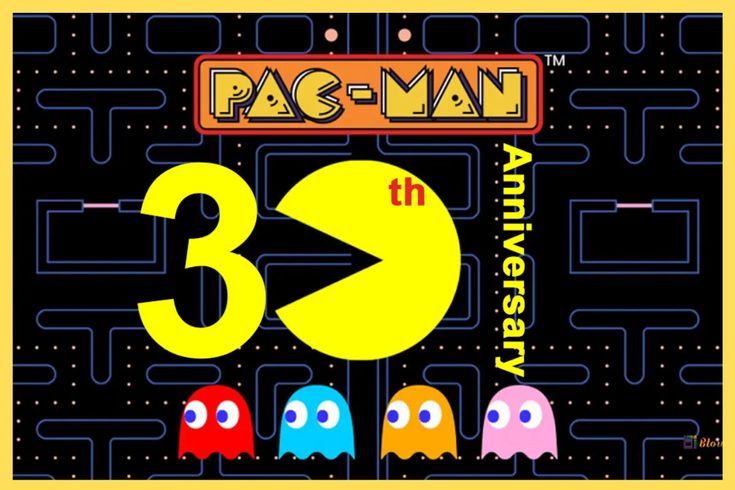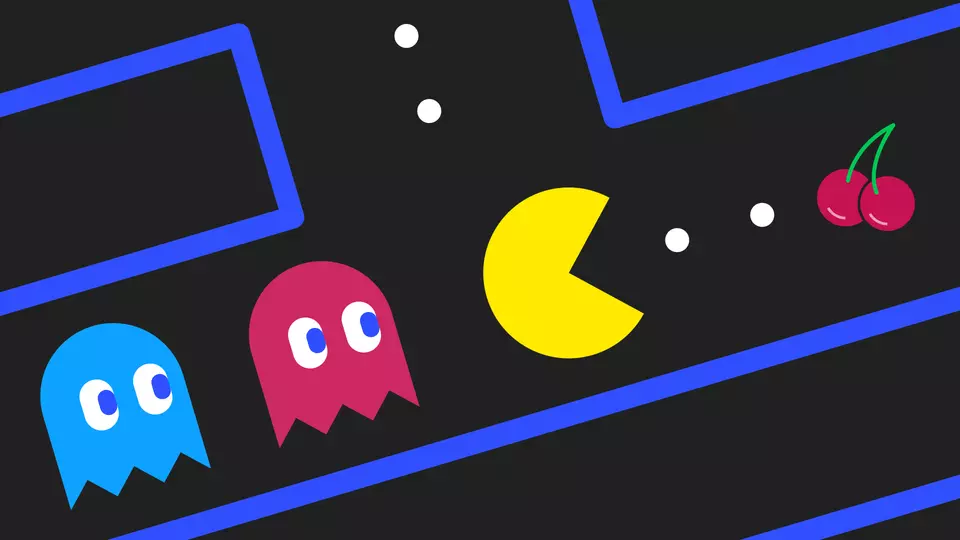In 2010, the gaming world celebrated a monumental milestone — the 30th anniversary of Pac-Man. Few video games have achieved the legendary status that Pac-Man holds, not only as a pioneer in arcade gaming but as a cultural phenomenon that continues to capture hearts worldwide. This anniversary was a time to honor a character and a game that transcended pixels and mazes to become a symbol of joy, innovation, and timeless fun.
The Birth of a Classic
Pac-Man was introduced to the world in 1980 by Namco, designed by Toru Iwatani. At a time when most arcade games centered on space battles and shooting, Pac-Man broke the mold. Iwatani’s goal was to create a game that would appeal to a broad demographic, including women, who were largely overlooked in the gaming scene.
Inspired by a pizza with a slice missing, Pac-Man’s simple, round shape with an open mouth was instantly recognizable. The gameplay was equally intuitive: guide Pac-Man through a maze, gobble up pellets, and avoid the four ghost enemies. This non-violent, strategy-based gameplay offered something fresh and accessible for all ages.
Why Pac-Man Took the World by Storm
Pac-Man’s rise to fame was swift and unparalleled. It was not only a commercial success, becoming one of the best-selling arcade games of all time, but it also broke social and cultural barriers.
More about: pacman 30th anniversary
Universal Appeal
The game’s appeal was broad — kids, adults, men, and women all flocked to arcades to try to beat their high scores. Its charming character design and fun sound effects made it a welcoming entry point for newcomers to gaming.
Groundbreaking AI
One of Pac-Man’s most impressive features was the sophisticated AI of its ghost enemies. Each ghost had a unique personality and strategy for hunting Pac-Man, which added a deep layer of complexity and replayability rarely seen in arcade games of that era.
Impact on Pop Culture
Pac-Man wasn’t just a game; it became a pop culture icon. The character appeared on everything from lunchboxes and T-shirts to Saturday morning cartoons. The catchy tune “Pac-Man Fever” became a hit single, further embedding the character into the cultural zeitgeist.

The 30th Anniversary: A Tribute to an Enduring Legacy
The 30th anniversary in 2010 was a global celebration of Pac-Man’s enduring influence. Namco and the gaming community took this opportunity to reflect on the character’s historic achievements and to introduce Pac-Man to a new generation.
New Game Releases
Namco launched updated versions of Pac-Man, such as Pac-Man Championship Edition DX, which revitalized the gameplay with modern graphics, new mazes, and faster pace, while retaining the classic feel. These editions were released on multiple platforms, including consoles, PCs, and mobile devices.
Community Events and Tournaments
Arcades, gaming expos, and online communities organized competitions and high-score challenges. Fans worldwide came together to celebrate and compete, proving Pac-Man’s competitive spirit remained alive after three decades.
Special Merchandise and Collaborations
The anniversary also brought limited-edition merchandise, apparel, and collector’s items, reigniting fan enthusiasm. Collaborations with other popular franchises introduced Pac-Man to broader audiences.
How Pac-Man Changed the Video Game Landscape
Pac-Man’s influence can be seen throughout the gaming industry:
- Expanding the Audience: By creating a game that appealed to women and casual players, Pac-Man helped broaden the video game market.
- Advancing AI in Games: The ghosts’ distinct behaviors were early examples of enemy AI that challenged players to think strategically.
- Branding and Merchandising: Pac-Man pioneered the idea that video game characters could become powerful brands beyond the games themselves.
- Gameplay Innovation: The risk-and-reward mechanic of power pellets added excitement and strategic depth.
Why Pac-Man Still Matters Today
Despite the advances in gaming technology and the rise of complex narratives, Pac-Man’s simple, addictive gameplay continues to attract players. It offers an experience that is easy to pick up but challenging to master.
Timeless Gameplay
The core loop of navigating mazes, collecting pellets, and outwitting ghosts remains compelling. Its design ensures that each game is a new challenge, maintaining its appeal across decades.
Nostalgia Meets Innovation
While retro gamers enjoy the classic versions, new players discover the franchise through updated releases and spin-offs, which combine nostalgia with modern gaming sensibilities.
Cultural Impact
Pac-Man remains a symbol of the early days of gaming. It is celebrated in museums, exhibitions, and retrospectives as a piece of digital art and history.
Looking Forward: Pac-Man Beyond 30 Years
As the franchise moves beyond its 30th anniversary, Pac-Man continues to evolve. With the advent of mobile gaming, virtual reality, and cloud gaming, the possibilities for new Pac-Man experiences are endless.
Developers continue to find creative ways to keep the character relevant, proving that a simple design paired with clever gameplay can endure the test of time. The character’s universal appeal ensures that Pac-Man will remain a beloved figure for decades to come.
Frequently Asked Questions (FAQs) about Pac-Man 30th Anniversary
Q1: When was Pac-Man first released?
A1: Pac-Man debuted in 1980, created by Namco and designed by Toru Iwatani.
Q2: What made Pac-Man different from other arcade games at its launch?
A2: It featured non-violent maze gameplay with unique enemy AI, appealing to a wide demographic.
Q3: How did Pac-Man’s ghosts behave differently from one another?
A3: Each ghost had a distinct AI pattern — some chased directly, others ambushed or wandered — creating strategic depth.
Q4: How was the 30th anniversary celebrated?
A4: With new game releases, tournaments, merchandise, and global fan events in 2010.
Q5: Are there modern versions of Pac-Man?
A5: Yes, including Pac-Man Championship Edition and various mobile adaptations.
Q6: Why is Pac-Man considered a cultural icon?
A6: Due to its widespread influence on media, merchandising, and popular culture beyond gaming.
Q7: Can Pac-Man be played on smartphones?
A7: Yes, there are many official Pac-Man games available on iOS and Android.
Q8: How has Pac-Man influenced game design?
A8: Through its use of AI, simple but deep mechanics, and appealing to diverse players.
Q9: What’s the significance of the power pellets?
A9: They let Pac-Man temporarily eat the ghosts, introducing risk-and-reward gameplay.
Q10: Why does Pac-Man remain popular after 30 years?
A10: Its timeless design, fun gameplay, and cultural significance keep it relevant.
More Must Visit: masterfxstrategies

